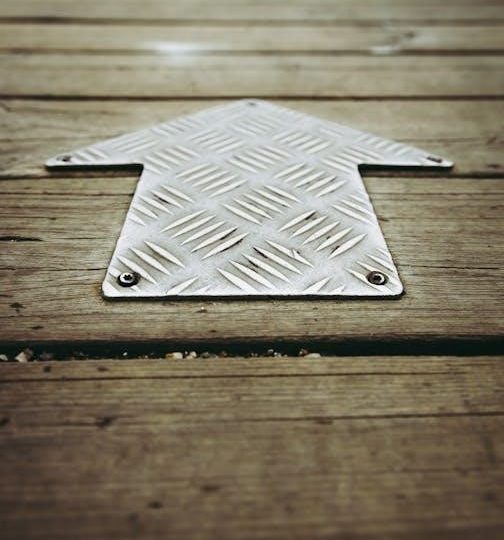Screw measurement is critical for ensuring accuracy in manufacturing and construction. It involves assessing dimensions like diameter, pitch, and length. Proper measurement ensures compatibility and functionality, requiring specialized tools for precision.
Understanding Screw Dimensions
Screw dimensions include major diameter, thread pitch, and length. Accurate measurement ensures proper fitment and functionality. Tools like calipers and screw gauges are essential for precise assessment.
2.1 Major Diameter
The major diameter is the largest diameter of the screw thread, measured from the crest of one thread to the crest of the opposite thread. It is a critical dimension for ensuring proper fitment in threaded holes. Proper measurement of the major diameter is essential to avoid issues like loose fitment or damage to the material. Using calipers or screw gauges, the major diameter is measured across the threads, ensuring accuracy. This dimension is often specified in screw thread callouts and is crucial for maintaining the structural integrity of assemblies. Accurate measurement prevents potential failures and ensures compatibility with mating parts.
2.2 Thread Pitch
Thread pitch is the distance between the crest of one thread to the crest of the next thread, measured parallel to the axis of the screw. It is a key dimension in screw measurement, determining the coarseness or fineness of the threads. A larger pitch indicates fewer threads per inch, while a smaller pitch means more threads per inch. Proper measurement of thread pitch ensures compatibility with mating parts and prevents issues like loose fitment or premature wear. The pitch is typically measured using screw gauges or calipers, ensuring accuracy to maintain the structural integrity of the assembly.
Thread pitch is critical in applications requiring precise alignment and load distribution. Measuring it accurately ensures screws function as intended, avoiding potential failures. Always use appropriate tools for consistent results.
2.3 Screw Length
Measuring screw length is essential for ensuring proper fitment and functionality. The length is measured from the top of the head to the tip of the screw for flat head or countersunk screws. For round head, pan head, and socket head screws, the measurement starts from the base of the head to the tip, excluding the head itself. This ensures that only the threaded portion is considered, which is crucial for insertion into materials. Screw length is typically measured in millimeters for metric screws and inches for imperial screws, maintaining consistency in units. Using precise tools like digital calipers or screw gauges is recommended for accuracy. Accurate measurement prevents issues like protrusion or insufficient hold, ensuring structural integrity and proper assembly. Common mistakes include measuring from the wrong reference point or using improper tools, which can lead to fitment problems. Always measure carefully to avoid errors and ensure optimal performance. Proper measurement techniques are vital for reliable outcomes in any application.
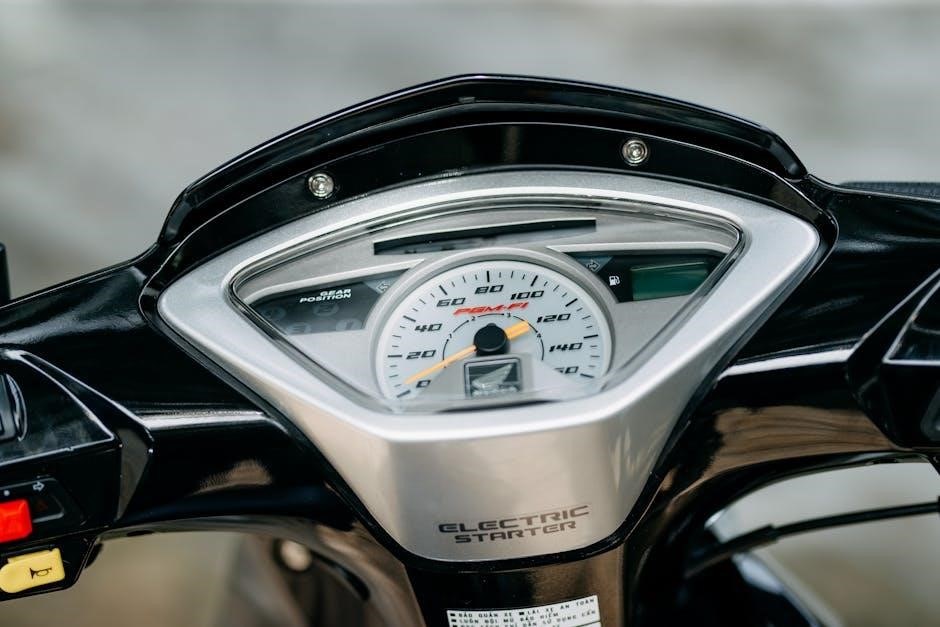
Screw Head Measurement
Measuring screw head dimensions ensures proper fitment and functionality. Use digital calipers to measure width and height accurately. This step is crucial for compatibility and secure fastening in applications.
3.1 Head Type
The head type of a screw is determined by its shape and functionality. Common types include flat, countersunk, round, pan, and hex heads. Each type serves a specific purpose, such as flush mounting or providing a larger driving surface; Measuring the head involves assessing its width and height using calipers or gauges. For countersunk screws, the head is angled to sit flush with the material surface. Proper measurement ensures the screw fits the intended application without protruding or causing structural issues. Accurate head type identification is essential for compatibility and performance in various mechanical and construction applications.
3.2 Drive Type
The drive type of a screw refers to the shape of the recess in the screw head, designed to interact with a specific tool. Common drive types include Phillips, flathead, hex (Allen), and Torx. Each drive type ensures proper torque transmission and prevents cam-out, improving efficiency. Measuring the drive type involves assessing the recess dimensions using screw gauges or calipers. For example, a Phillips head has a cruciform shape, while a Torx features a star pattern. Accurate identification of the drive type is crucial for selecting the right tool, ensuring secure fastening, and preventing damage to the screw or surrounding material. Proper measurement and tool selection enhance the reliability and safety of the assembly process.
Thread Measurement
Thread measurement involves assessing pitch and thread count. Pitch is the distance between threads, while thread count determines coarseness or fineness. Accurate measurement ensures compatibility and fit.
4.1 Thread Pitch
Thread pitch refers to the distance between consecutive screw threads, measured from crest to crest. It is a critical dimension for ensuring compatibility between screws and mating parts. In the metric system, pitch is expressed in millimeters, while in the imperial system, it is measured in inches. A coarse thread pitch, such as 1/4-20, indicates fewer threads per inch, offering greater strength for thicker materials. Conversely, a fine pitch, like 1/4-28, provides more threads per inch, ideal for precision applications and thinner materials. Accurate measurement of thread pitch is essential to avoid assembly issues and ensure proper fit and functionality in mechanical systems. Proper tools, like screw gauges, are necessary for precise measurement to maintain quality and reliability in manufacturing processes.
4.2 Thread Count
Thread count, or threads per inch (TPI), measures the number of threads within a one-inch section of a screw. It is determined by counting the threads in a measured length, typically one inch, along the screw’s shank. A higher thread count indicates finer threads, which are better suited for precise applications and thinner materials. Coarser threads, with fewer threads per inch, are ideal for thicker materials and provide greater strength. Accurate measurement of thread count ensures compatibility with mating parts and proper functionality. It is crucial to use calibrated tools, such as screw gauges, to measure thread count precisely. This measurement is vital for maintaining quality and reliability in manufacturing and construction processes. Proper thread count ensures optimal performance and longevity of the screw in its intended application.
Screw Gauge System
The screw gauge system is a standardized method for measuring screw threads to ensure accuracy and compatibility. It utilizes GO and NO GO gauges to verify thread dimensions. The GO gauge checks the minimum thread diameter, while the NO GO gauge ensures the maximum diameter is not exceeded. This system is essential for maintaining consistency in manufacturing and ensuring screws fit properly into corresponding components. By using screw gauges, manufacturers can prevent assembly issues and guarantee product reliability. The screw gauge system is widely adopted across industries, providing a reliable means of verifying thread specifications. It plays a critical role in quality control and is indispensable for achieving precise measurements in screw production and assembly processes. This method ensures adherence to international standards, making it a cornerstone of modern manufacturing practices.
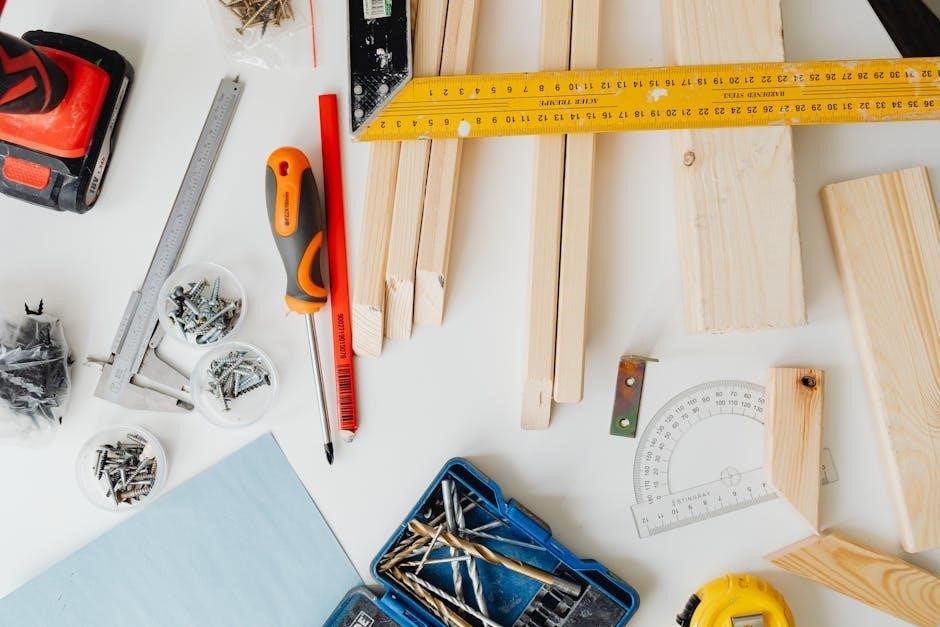
Diameter Measurement
Measuring the diameter of a screw is essential for ensuring compatibility and fitment. The process involves using calipers or screw gauges. For calipers, insert the screw lengthwise up to the head base, ensuring it is straight. Measure across the outer threads for the major diameter and the inner threads for the minor diameter. The screw gauge system uses GO and NO GO gauges: GO checks the minimum diameter, and NO GO ensures the maximum is not exceeded. This method verifies compliance with specifications. Consistency in units (millimeters for Metric, inches for SAE) is crucial. Safety precautions, such as wearing gloves, are recommended when handling sharp screws. Accurate diameter measurement ensures proper assembly and functionality, making it a critical step in manufacturing and construction processes.
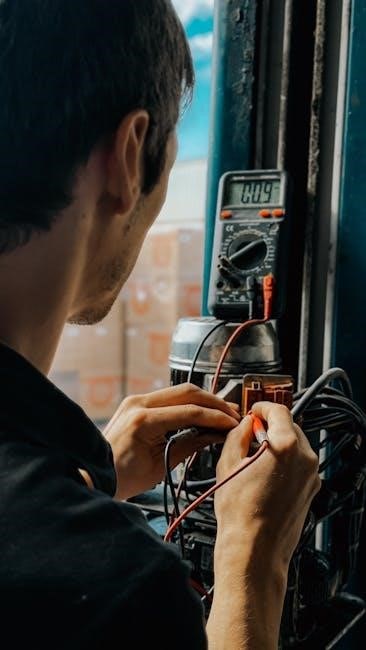
Length Measurement
Screw length is measured from the top of the head to the tip of the screw. For flat head or countersunk screws, measure from the head’s top to the tip. Round head, pan head, or socket head screws are measured from the base of the head to the tip. Use calipers or a screw gauge for accuracy. Insert the screw lengthwise into the caliper, ensuring it is straight. Digital calipers provide precise measurements in millimeters or inches. For metric screws, measure in millimeters, while inch-based systems use fractional or decimal inches. Accurate length measurement is crucial for proper fitment and functionality. Always use appropriate tools to ensure reliability and consistency in your measurements.

Angle Measurement
Measuring the angle of a screw involves determining the thread angle or the drive angle. The thread angle is the angle formed by the threads as they wrap around the screw’s shank. This can be measured using specialized tools like thread gauges or optical instruments. For drive angles, such as the 45-degree angle of a Phillips head, the measurement ensures the screwdriver fits properly without slipping. Accurate angle measurement is crucial for ensuring compatibility and proper fitment. Tools like thread profilers can be used for precise measurements, especially in machining applications. Understanding the specific angle being measured—whether thread or drive—is essential for selecting the right tool and technique. This ensures the screw functions as intended and maintains its performance and longevity.
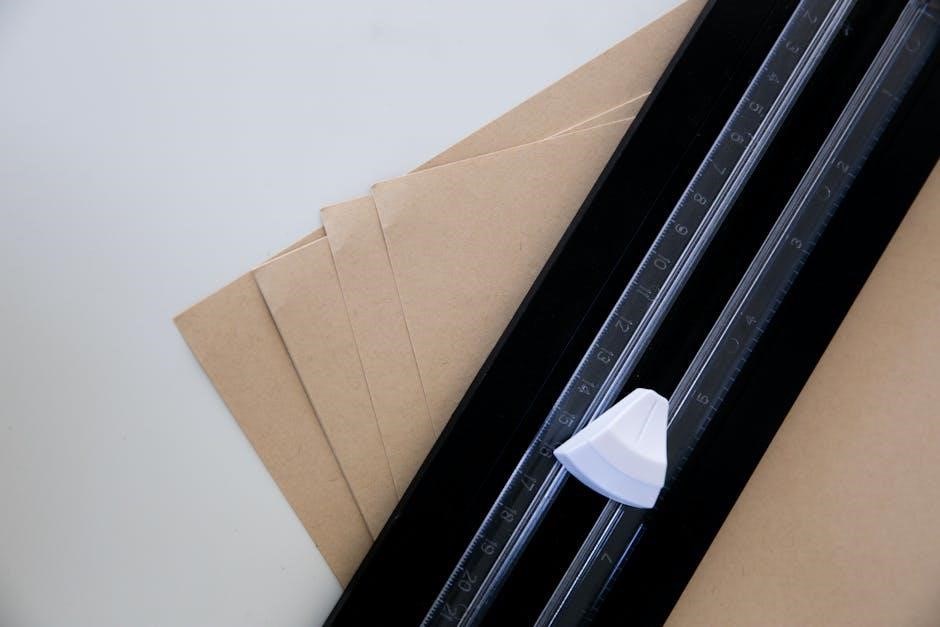
Thread Measurement Techniques
Measuring screw threads accurately is essential for ensuring compatibility and functionality. Techniques include using screw gauges, calipers, and thread profiling tools. The 3-wire method is a common approach for measuring internal threads, while external threads are often assessed with pitch gauges. Optical profilometers provide precise measurements of thread geometry, including pitch, angle, and depth. Laser-based systems can also measure thread characteristics with high accuracy. Proper techniques ensure that measurements are reliable and repeatable, reducing errors in manufacturing. For coarse or fine threads, specialized tools may be required to accurately capture thread dimensions. Regular calibration of measurement tools is crucial to maintain precision and consistency. By employing the right techniques, thread measurement ensures screws meet specifications and perform as intended in their applications.
Screw Classification
Screws are classified based on their head type, drive type, thread pattern, and application. Common head types include flat, round, pan, and hex heads, each suited for specific uses. Drive types range from Phillips to hex (Allen) and Torx, affecting tool compatibility. Thread patterns vary between coarse and fine, impacting load-bearing capacity and material engagement. Screws are also categorized by their material, such as steel, stainless steel, or brass, and by their finish, like zinc or chrome plating. Application-based classifications include machine screws, wood screws, and self-tapping screws. Proper classification ensures correct selection for tasks, enhancing performance and durability. Understanding screw types aids in choosing the right fastener for any project, ensuring strength and reliability. Accurate classification is vital for meeting design and safety standards in various industries.
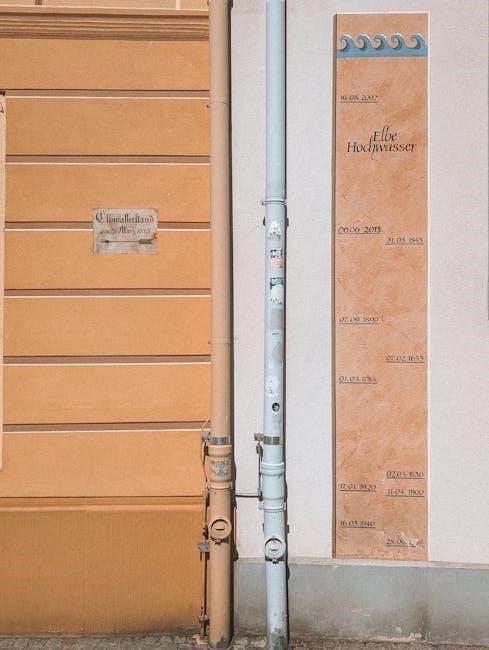
Essential Tools for Measurement
Calipers, screw gauges, and micrometers are vital tools for precise screw measurements. Calipers measure diameter and length, while screw gauges ensure thread accuracy. These tools ensure precision and consistency.
11.1 Calipers
Calipers are versatile tools used to measure screw dimensions like diameter and length. Digital calipers offer precise measurements, capturing even minor details. They are essential for ensuring screws fit specifications accurately in various applications.
11.2 Screw Gauges
Screw gauges are specialized tools designed to measure thread pitch and diameter accurately. They are available in both imperial and metric scales, ensuring compatibility with various screw types. These gauges are essential for verifying thread specifications, which is critical for proper fitment and functionality. By using a screw gauge, technicians can ensure that screws meet required standards, preventing assembly issues. They are particularly useful in precision engineering and manufacturing, where even slight deviations can lead to system failure. Regular use of screw gauges helps maintain quality control and consistency in production processes. Their versatility makes them indispensable in workshops and industrial settings, ensuring accurate measurements every time.
Best Practices
Always use calibrated tools, follow proper measurement techniques, and adhere to industry standards. Regularly check screw gauges for accuracy and consistency. Double-check measurements to avoid errors.
12.1 Using the Right Tools
Using the right tools is essential for accurate screw measurement. Calipers and screw gauges are indispensable for measuring diameter, thread pitch, and length. Digital tools enhance precision and reduce human error. Regular calibration and maintenance of tools ensure reliability. Proper tool selection, like using thread gauges for pitch measurement, is crucial for consistent results. Always refer to manufacturer guidelines for tool usage. Properly maintained tools minimize measurement errors and ensure compliance with industry standards. By selecting appropriate tools, you can achieve precise measurements, which are vital for the functionality and safety of screw applications in various industries.
12.2 Proper Techniques
Proper techniques are vital for accurate screw measurement. Always measure in a stable environment, ensuring the screw is secure. For diameter, align the tool with the screw’s axis. When measuring thread pitch, count threads per inch accurately. For length, measure from the head base to the tip. Use guides or fixtures to maintain consistency. Ensure the screw is clean to avoid measurement errors. Training and adherence to standards are key to mastering techniques. Proper methods prevent errors, ensuring screws fit and function as intended in their applications. Attention to detail and correct posture during measurement contribute to accuracy and efficiency in screw measurement tasks.
Common Mistakes
One common mistake in screw measurement is misaligning the tool with the screw’s axis, leading to inaccurate diameter readings. Another error is incorrectly counting threads per inch, which can result in wrong pitch measurements. Forgetting to measure from the head base to the tip when determining length is another frequent oversight. Using improper tools, such as a standard ruler instead of calipers, can also lead to imprecise results. Additionally, not accounting for screw head types when measuring length or diameter can cause significant errors. Ensuring the screw is clean and free from debris is crucial, as contamination can skew measurements. These mistakes can affect the functionality and compatibility of screws in various applications, emphasizing the need for careful attention to detail and proper techniques.
Applications
Screw measurement is essential across various industries, including aerospace, automotive, and construction. In manufacturing, precise measurements ensure screws fit correctly into assemblies, preventing mechanical failures. In woodworking, accurate screw length and diameter measurements are crucial for joint integrity. Medical devices require exacting standards for screw dimensions to ensure safety and functionality. Additionally, in electronics, measuring screws ensures proper installation of components like PCBs. The construction industry relies on accurate measurements for structural integrity, while furniture making uses screw measurements to achieve durability and aesthetics. Each application demands specific measurement techniques and tools to meet industry standards, making screw measurement a universal skill with diverse uses. Proper techniques ensure reliability and performance across all sectors.
Future Trends
Future trends in screw measurement emphasize precision and automation. Digital calipers and advanced software will enhance accuracy, while automated systems streamline the process. The integration of IoT devices for real-time monitoring is expected to rise, enabling predictive maintenance. Innovations in material science may introduce screws with unique properties, requiring updated measurement standards. Additionally, the use of AI for error detection in screw measurements could become common, reducing human error. These advancements aim to improve efficiency and consistency across industries, ensuring screws meet exacting specifications. As technology evolves, screw measurement will become more integrated with smart manufacturing systems, driving innovation and reliability. Such trends highlight the importance of adaptability in measurement practices to keep pace with technological developments. The future promises more precise, efficient, and intelligent screw measurement solutions.

Troubleshooting
Common issues in screw measurement include inaccurate readings due to improper tool calibration or misuse. To resolve this, ensure calipers or gauges are calibrated correctly and used as instructed. If screws are not fitting, check for incorrect pitch or diameter measurements. Misalignment during measurement can lead to errors; always position the screw straight. For digital tools, battery life or sensor accuracy might cause inconsistencies. Regularly maintain tools and refer to manufacturer guidelines. If threads appear worn, verify thread count and pitch measurements. Consult measurement guides or seek professional advice if issues persist. Proper training and attention to detail are key to avoiding and resolving measurement problems effectively. Troubleshooting ensures accuracy and compatibility in screw applications. Always double-check measurements to prevent assembly issues.
FAQs
Frequently asked questions about screw measurement often revolve around accuracy and tools. Q: What is the most important aspect of screw measurement? A: Ensuring precise diameter and thread pitch readings. Q: Which tool is best for measuring screw threads? A: Calipers or screw gauges are ideal. Q: How do I measure screw length? A: From the head to the tip for flat heads, and under the head for rounded types. Q: Why are thread measurements crucial? A: They determine compatibility and functionality. Q: Can I use digital tools for better accuracy? A: Yes, digital calipers provide precise readings. Q: How often should tools be calibrated? A: Regularly, to maintain measurement accuracy. Q: What causes measurement errors? A: Misalignment, worn tools, or incorrect techniques. Addressing these FAQs ensures reliable screw measurement outcomes.

Safety Tips
Ensuring safety while measuring screws is crucial to avoid accidents and ensure accurate results. Always wear safety glasses to protect eyes from flying particles. Use well-maintained tools to prevent slippage or breakage. Handle sharp screw tips with care to avoid cuts. Work in a well-lit area to minimize errors. Avoid over-tightening screws, as this can damage the material or surrounding structure. Keep loose clothing and long hair tied back to prevent entanglement with tools. Use the correct screwdriver or tool for the job to avoid stripping threads. Store screws and tools in a secure, dry place to prevent rust or misplacement. Regularly inspect tools for wear and tear, replacing them when necessary. Follow manufacturer guidelines for specific screw types and measurement techniques. By adhering to these safety tips, you can ensure a safe and efficient measurement process.
Environmental Considerations
Environmental considerations play a crucial role in screw measurement processes. Proper disposal of worn-out screws and tools prevents environmental contamination. Using eco-friendly materials for screws reduces their ecological footprint. Minimizing waste during manufacturing ensures sustainable practices. Storing screws in dry, secure locations prevents rust and reduces the need for frequent replacements. Energy-efficient tools for measurement contribute to lower carbon emissions. Avoiding overproduction of screws helps conserve resources and reduces industrial waste. Recycling metal scraps from screw manufacturing promotes a circular economy. Ensuring screws are measured accurately reduces the likelihood of defects, minimizing the environmental impact of remanufacturing. By adopting sustainable practices, the screw measurement process can align with global environmental goals, fostering a greener future for manufacturing and construction industries.

References
For further reading and detailed insights, refer to academic journals, technical manuals, and industry standards. Resources like “Safe and Accurate Midcervical Pedicle Screw Insertion” by AV Kosulin provide valuable methodologies. Screw measurement guides from reputable manufacturers and engineering publications offer practical tips. Online forums and tutorials discuss common challenges and solutions. Standards from organizations like ASTM and ISO outline precise measurement protocols. Additionally, textbooks on mechanical engineering and fastening technologies cover foundational concepts. These references ensure a comprehensive understanding of screw measurement, aiding professionals in achieving precision and reliability in their work. They also highlight emerging trends and innovations, helping practitioners stay updated in the field. Consult these sources for in-depth knowledge and troubleshooting techniques.
